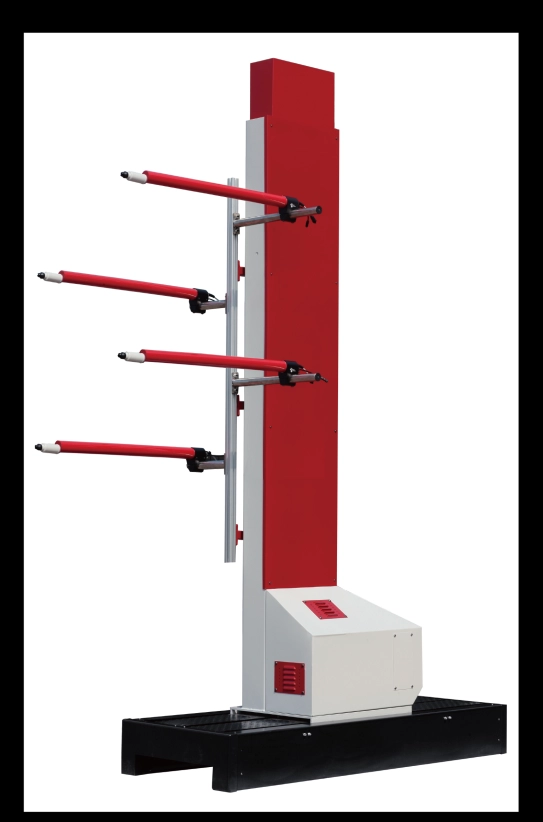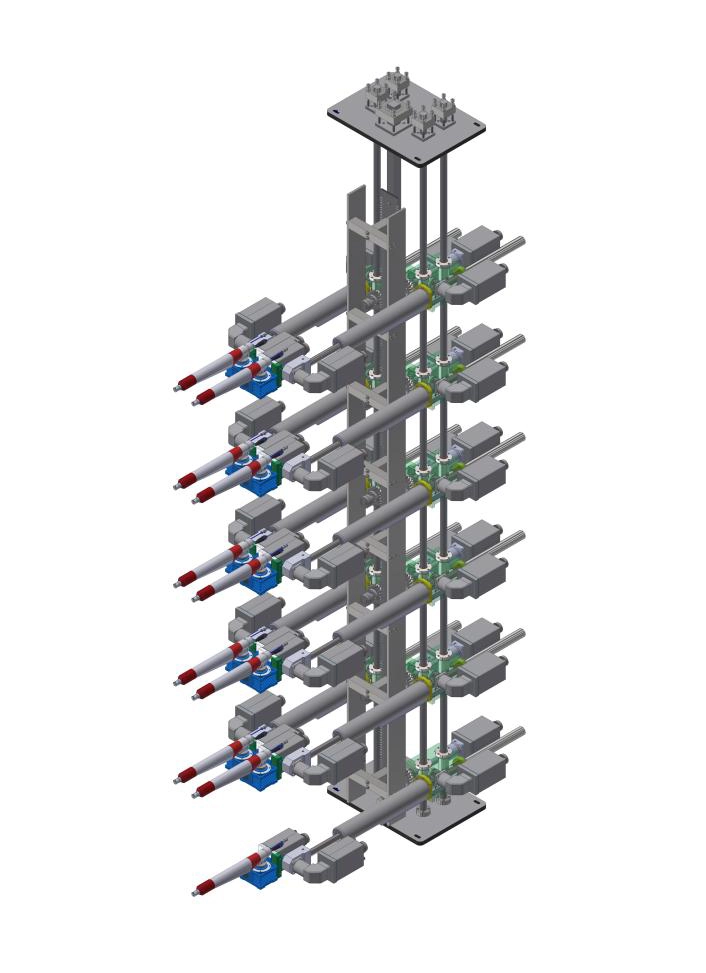Content Menu
● Understanding electrostatic spray technology
● Key factors to consider when choosing a gun
● Budget-friendly models worth considering
● How to optimize performance on a budget
● Coatings and substrate considerations
● Safety and compliance considerations
● Maintenance routine for longevity
● Comparison with other spraying approaches
● Practical installation tips
● Troubleshooting common issues
● Use cases across industries
● Question-driven guidance
● Best practices for a small shop
● Sustainability considerations
● Conclusion
● Frequently Asked Questions
In industrial settings, achieving consistent coating quality while controlling costs is a constant challenge. Manual electrostatic spray guns have emerged as a practical solution for many shops, providing precise material deposition, reduced overspray, and improved transfer efficiency without the complexity of automatic systems. This article explores budget-friendly manual electrostatic spray guns suitable for a range of industrial applications, offering practical guidance on selection, operation, maintenance, safety, and optimization.

Understanding electrostatic spray technology
Electrostatic spray technology works by charging the coating particles as they exit the spray gun. The charged droplets are attracted to the grounded or oppositely charged target objects, resulting in improved transfer efficiency and more uniform coverage. This technology is especially beneficial for complex geometries, recesses, and hard-to-reach areas where conventional spraying may waste material or produce uneven finishes. For budget-conscious establishments, manual electrostatic systems deliver many of the benefits of automated systems at a fraction of the cost.
Key factors to consider when choosing a gun
When selecting a budget-friendly manual electrostatic spray gun, consider the following factors to ensure you get the best value for your specific operations:
- Compatibility with coatings: Check viscosity ranges, nozzle choices, and recommended anodized aluminum or insulated components. Some guns excel with high-solids coatings, while others perform best with waterborne or solvent-based formulations.
- Electrostatic charge method: Guns may use corona or triboelectric charging. Corona systems are common in budget models and provide robust charge characteristics across a wide range of coatings.
- Air requirements: Determine recommended air pressure and flow. Budget models should integrate well with standard shop compressors without requiring expensive ancillary equipment.
- Transfer efficiency targets: Look for specifications or independent tests showing improved transfer efficiency relative to non-electrostatic spraying. Even modest gains can reduce material costs over time.
- Ergonomics and weight: Since these tools are often used for extended periods, a comfortable grip, well-balanced design, and easy trigger operation improve productivity.
- Maintenance costs: Consider the availability of spare parts, seals, and nozzles. A lower upfront price is not beneficial if consumables are expensive or hard to source.
- Warranty and support: A solid warranty and accessible technical support help protect your investment, particularly in demanding industrial environments.
Budget-friendly models worth considering
Not all budget models are equal. The following categories highlight options commonly found in the market that balance cost with reliability and performance:
- Corona-charged manual guns with adjustable voltage: These systems provide consistent charging with straightforward controls, making them suitable for a wide range of coatings and substrate types.
- Lightweight composite or aluminum bodies: Reducing weight minimizes operator fatigue while maintaining durability in shop environments.
- Interchangeable nozzle kits: Guns that support multiple nozzle sizes offer versatility for different coating thicknesses and coverage patterns without purchasing multiple separate units.
- Simplified grounding solutions: Effective grounding is essential for electrostatic performance. Look for integrated grounding features or compatibility with common grounding accessories to keep installation simple and cost-effective.
How to optimize performance on a budget
Even with affordable tools, you can maximize coating efficiency and finish quality by applying these practical tips:
- Prepare coatings properly: Use compatible thinners and maintain the manufacturer's recommended viscosity. Strain and filter coatings to prevent nozzle clogging and inconsistent spray patterns.
- Balance air pressure and fluid flow: Follow the gun's guidelines to avoid excessive atomization or insufficient transfer. Small adjustments can yield noticeable improvements in coverage.
- Maintain consistent distance: Maintain a steady spray distance to avoid stochastic variations in thickness. A lightweight, ergonomic grip helps sustain a consistent motion.
- Ensure solid grounding: A reliable ground path reduces charge loss and improves projection efficiency. Regularly inspect grounding cables and clamps for wear.
- Cleanliness matters: Rinse and wipe down components after each use. Build-up on the nozzle or needle can cause inconsistent spray and drift.
- Schedule preventive maintenance: Create a routine to inspect seals, O-rings, and spray tips. Early replacement avoids costly downtime.
Coatings and substrate considerations
Different coatings and substrates influence performance and results:
- Coating viscosity: Higher viscosity coatings may require larger nozzle orifice sizes and adjusted air pressures. If a coating is too thick, consider thinning within manufacturer recommendations.
- Substrate complexity: Irregular shapes or recessed areas benefit more from electrostatic attraction, which helps achieve uniform coverage with fewer passes.
- Drying and curing: Consider the drying time compatible with the substrate and production line speed. Electrostatic spraying can reduce cycle times when paired with appropriate curing schedules.
Safety and compliance considerations
Operating budget-friendly electrostatic spray guns responsibly ensures worker safety and product quality:
- Eye and respiratory protection: Use appropriate PPE, including safety glasses and respiratory protection when working with solvent-based coatings or aerosols.
- Ventilation and containment: Maintain adequate ventilation and use containment strategies to minimize overspray and drift.
- Electrical safety: Follow electrical safety best practices, including proper grounding and inspection of cables and connectors. Do not operate damaged equipment.
- Material safety data sheets: Review MSDS for every coating to understand hazards, flammability, and handling requirements.
Maintenance routine for longevity
A simple, repeatable maintenance routine extends the life of budget spray guns:
- After every shift: Rinse with compatible solvent or water, depending on the coating, and thoroughly dry.
- Weekly: Inspect seals and o-rings for wear; replace as needed. Check air filters and hoses for leaks.
- Monthly: Disassemble the gun to inspect internal passages and triggers. Clean thoroughly and reassemble with proper lubrication where specified.
- Annually: Have a professional service inspection if the gun shows persistent performance issues or if seals degrade.
Comparison with other spraying approaches
To help decide if a budget manual electrostatic gun fits your operation, compare it with alternative approaches:
| Method | Pros | Cons |
| Manual electrostatic spray gun | Lower initial cost, good for spot coatings, improved transfer efficiency | Operator skill required, may require more frequent maintenance |
| Traditional air spray gun | Simple, inexpensive consumables, broad coating compatibility | Higher overspray, less efficient material usage, poorer coverage on complex geometries |
| Automatic electrostatic systems | Consistent results, high throughput, minimal operator variability | High capital cost, complex maintenance, longer setup times |
Practical installation tips
- Positioning: Place the spray gun within an organized workflow area to minimize reach and fatigue. Use a central air supply and stable grounding points.
- Cable management: Keep power and grounding cables untangled and away from moving parts to reduce wear and safety risk.
- Training: Provide hands-on training focusing on setup, maintenance, and safety to ensure that operators maximize efficiency and reduce wasted material.
Troubleshooting common issues
- Uneven spray pattern: Check nozzle cleanliness, correct nozzle size, and confirm consistent air pressure. Ensure the coating viscosity aligns with recommendations.
- Charge instability: Inspect grounding connections, battery or power supply (if used), and verify that the available voltage is within the recommended range.
- Excessive overspray: Review distance and spray technique. Consider adjusting atomization or flow rate and verify ventilation is sufficient.
Use cases across industries
Budget-friendly manual electrostatic spray guns find utility across several industrial segments:
- Automotive parts finishing: Efficiently apply primers and topcoats to contours and recessed features.
- Metal furniture and hardware: Achieve uniform coatings on intricate frames and fasteners.
- Consumer electronics enclosures: Provide edge-to-edge coverage on complex shapes with minimal waste.
- Industrial equipment housings: Coat large, uneven surfaces with efficient transfer.
Question-driven guidance
To help you tailor a purchase decision, consider these questions:
- What materials will you spray most often, and what are their viscosities?
- Do you require compatibility with high-solids coatings or waterborne systems?
- What are your production volumes, and is a budget model sufficient or is an upgrade warranted for future growth?
- How critical is reach, weight, and ease of use for your operators?
- What level of after-sales support and spare parts availability does your supplier provide?
Best practices for a small shop
- Start with one versatile model: Choose a gun with adjustable voltage and multiple nozzle options to cover a range of coatings and substrates.
- Train operators for consistency: Emphasize steady hand movements, appropriate spray distance, and proper setup to minimize variation.
- Measure outcomes: Track coating thickness, coverage uniformity, and finish quality to assess whether the budget gun meets your requirements.
Sustainability considerations
Efficient electrostatic spraying helps reduce waste and solvent usage. A well-chosen budget model can contribute to lower material costs and less environmental impact when maintained properly. Pair spraying with appropriate ventilation and filtration to minimize emissions and occupational exposure.
Conclusion
Budget-friendly manual electrostatic spray guns offer a compelling combination of affordability, efficiency, and versatility for industrial use. With careful selection based on coating compatibility, charging method, air requirements, and maintenance considerations, shops can achieve reliable, high-quality finishes without the complexity or cost of fully automated systems. By focusing on operator training, proper setup, and routine maintenance, you can maximize transfer efficiency, reduce waste, and extend the life of your equipment.

Frequently Asked Questions
Q1: What is the main advantage of using a manual electrostatic spray gun in an industrial setting?
A1: The main advantage is improved transfer efficiency and more uniform coating coverage on complex geometries, which reduces material waste and improves finish quality without the cost of automation.
Q2: How do corona-charged manual guns differ from triboelectric systems?
A2: Corona-charged guns use an electrical field to charge droplets, providing strong and consistent charging across various coatings, while triboelectric systems rely on friction with the coating material and may have more variable charging under different conditions.
Q3: What should I consider when selecting nozzles for budget models?
A3: Consider the coating viscosity, desired spray pattern, and recommended nozzle sizes by the manufacturer. Interchangeable nozzles offer versatility for different applications.
Q4: How important is grounding for electrostatic spraying?
A4: Grounding is essential for maintaining charge and achieving consistent transfer efficiency. Ensure grounding clamps and cables are in good condition and properly connected.
Q5: What maintenance steps are most critical for performance?
A5: Regular cleaning of the nozzle and passages, timely replacement of seals and O-rings, and ensuring consistent air supply and proper grounding contribute most to stable performance.
Hot Tags: China, Global, OEM, private label, manufacturers, factory, suppliers, manufacturing company










































 .
. 